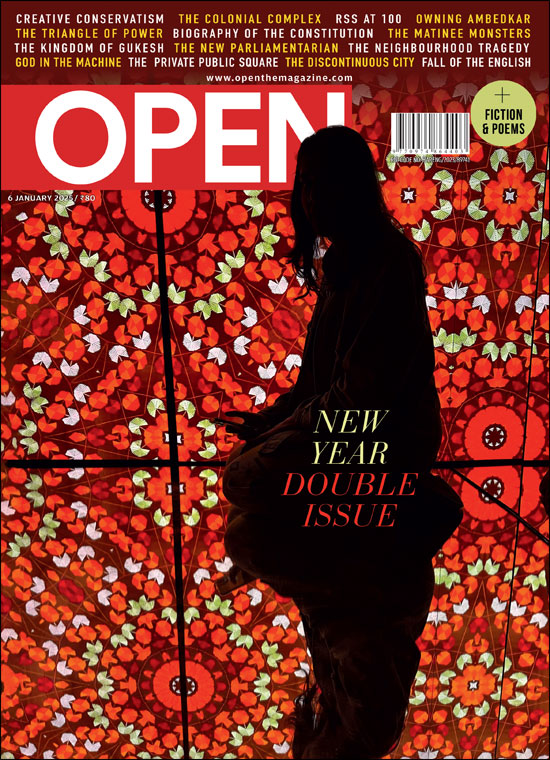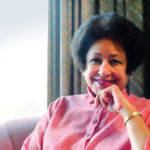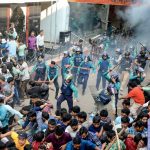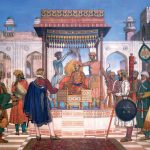Hindus and Sacred Cows: Recipe for Indentity Politics
Food as a tool of identitarian politics
 Shylashri Shankar
Shylashri Shankar
 Shylashri Shankar
|
20 Apr, 2017
Shylashri Shankar
|
20 Apr, 2017
/wp-content/uploads/2017/04/Cow.jpg)
WHEN A LYNCH mob kills a Muslim man in Uttar Pradesh over rumours that his family had slaughtered a cow and had beef in the freezer, when ‘cow protection’ vigilantes thrash four Dalit men in Gujarat for trying to skin a cow, when two Muslim women are beaten up and accused of carrying beef, the sub-text is clear. It is not simply about whether one has the right to eat beef. The present political ruckus over cow slaughter and food habits is another stage in the ongoing struggle to define the identity of who gets to be called an Indian and who does not, and who gets to decide the issue. It is about using a ban on beef to create a homogeneous identity of an Indian.
Worldwide, and historically, political parties and social movements have been at the forefront of such identity design efforts. For instance, English rural gentry dishes emerged as the national cuisine in the 18th century as a reaction to the French influenced menus favoured by Whig party leaders. As Rachel Laudan points out in Cuisine and Empire, the County party, a group of Tories and disaffected Whigs—lawyers, country doctors and squires—who distrusted the power of London with its court, bankers and merchants, began questioning Whig grandees for paying exorbitant amounts to their French cooks, and dining on French sauces that required two dozen partridges at a time when England was at war with France. In Russia, scenes where the characters show different gastronomic preferences in novels such as Leo Tolstoy’s Anna Karenina reflect the 19th century Russian schism between Slavophiles and Westernisers. The urbane Stiva Oblonsky’s order—Cachet Blanc, oysters, turbot, roast beef, capon and Chablis —for a meal at the Hotel Angliia restaurant contrasts vividly with Konstantin Levin’s rustic preference for peasant fare such as bread, kasha and cabbage soup. This was a struggle over recovering the values of an ‘old Russia’, values that were being trampled by modernising forces from the West. The battle in these two examples does not pertain to religion. Even when food becomes political, the emphasis, as in present-day USA, is on the ethics and quality of production, on organic versus processed foods, and other environmental concerns. Or it is about using food as a tactical tool in trade talks. Curtailing the entry of cheese from France or fish from the EU to the UK is a commonly used measure. But in none of these cases is it about banning the food of a religious community or curtailing the profession of a religious group.
In India, on the other hand, food lends itself to the creation of an identitarian ideology based on religious sentiments. The term ‘identitarian’ comes from Adorno, who in Negative Dialectics sought to critique ideological representations of society that minimise or suppress real antagonisms; an apparent homogeneity masking underlying heterogeneities. One can use race, religion, ethnicity, food habits, etcetera, to create an identitarian ideology. But in India, more so than in other parts of the world, political and social movements have used a potent combination of religion and food habits to fashion an apparent homogeneity. This is so for three reasons.
First, food has a symbiotic connection with religion, particularly Hinduism, in India. The early Vedic tradition links the concept of perfection integrally with food. Food is identified as the firstborn of ñta, the active power of truth, which underlies all cosmic, divine and human action. Food, as Carlos Lopez highlights in Food and Immortality in the Veda: A Gastronomic Theology? is understood as the immortality-granting agent because of its primary, filial relationship to ñta. The firstborn of ñta (annam, food) existed before the gods and before creation, and is the prerequisite not only for the living cosmos but also for heavenly life. The social hierarchy for Hindus in the human realm is presented as a cosmic food chain where the higher classes are the eaters and the lower ones, the food. Caste is portrayed in the form of a series of mouths. It is by means of food that immortality (in heaven) is achieved, and food is also, as Wilhelm Rau points out, the vehicle through which the notion of power is discussed.
What you eat categorises you in terms of religion, geography and caste. Despite the commonly held opinion that most Indians are vegetarians, they are not
What you eat categorises you in terms of religion, geography and caste. A group’s religious and caste identity is created by food. Despite the commonly held opinion that most Indians are vegetarians, they are not. The findings of The Hindu-CNN-IBN State of the Nation Survey in 2006 shows that only 31 per cent of Indians are vegetarian. The figure is 21 per cent for families (with all vegetarian members). Another 9 per cent of the population is ‘eggetarian’, or vegetarians who eat eggs. The pure vegetarian category is occupied by Jains and Hindus mostly of the Brahmin caste. If you eat meat, the kind you eat marks your religious and caste identity. Beef is eaten by some Dalit groups and Muslims. Other Hindus eschew beef but eat pork, which is taboo to Muslims.
Mind you, these statements apply to these groups today, but not to their past. For instance, the main group attacked in the verses of Nilakeci, one of five minor epics of Tamil literature dated to the 10th century written by a Jain, are Buddhists who are criticised for permitting their adherents to eat meat as long as they do not personally slaughter it. The poem also chastises Vedic sacrifice on two grounds: that sacrificial killing results in negative karma, and that deities do not need such bloody offerings. What is interesting is that Brahmins are associated with Vedic sacrifices, and hence with non-vegetarianism rather than vegetarianism in that period. What this tells us is how fluid identities are with the passage of history in inhabiting categories such as veg and non- veg, clean and unclean, and so on. Fredrik Barth made a very telling point over 30 years ago that identity is essentially relational: that to study an identity, one must look at what it is defined against, and how that definition may change over time.
When Hindu political parties and social movements use food habits to create a powerful marker of Hindu identity, they are defining a Hindu as someone who does not eat beef, as opposed to a Muslim or a British coloniser who does. The present day ‘gau rakshaks’ (cow protectors) hark back to the late 19th century when a Hindu revival movement, the Arya Samaj, was launched in UP and Punjab and other parts of North India by Swami Dayanand Saraswati, who also called for saving the cow from slaughter. The Gaurakshini Sabha (cow protection committee) in 1882 was a potent force of Hindu revivalist movements in the 19th century and provoked a series of communal riots in Punjab between Hindus and Muslims in the 1880s and 1890s. Lokmanya Tilak took it up in the Deccan by creating Cow Protection Societies in prominent Indian cities including Nagpur, Pune, Hyderabad, Madras. It is no accident that the cow was chosen to connect with Hindu Indians, or that the meat in question is only beef, not poultry and fish.
The present day ‘gau rakshaks’ hark back to the late 19th century when a Hindu revival movement, the Arya Samaj, was launched by Swami Dayanand Saraswati
This links to the second reason for food’s use in identitarian politics in India. Whether you eat meat or abstain from it marks your ethical commitments such as the right way to attain a goal. Do ends justify the means or do we need to follow just means in order to attain a just goal? For Vivekananda, becoming free was more important than taking the life of a few goats. He exhorted the nation to eat meat in order to become strong and overthrow the British colonisers.
In his words from The Complete Works of Swami Vivekananda, ‘So long as man shall have to live a Rajasika (active) life under circumstances like the present, there is no other way except through meat-eating. It is true that the Emperor Asoka saved the lives of millions of animals, by the threat of the sword; but is not the slavery of a thousand years more dreadful than that? Taking the life of a few goats as against the inability to protect the honour of one’s own wife and daughter… which of these is more sinful?…[T]he forcing of vegetarianism upon those who have to earn their bread by labouring day and night is one of the causes of the loss of our national freedom. Japan is an example of what good and nourishing food can do.’
Vivekananda focused on energising Hindus in India, and this is evident in his response to the question of whether meat eating would include beef. No, he said, all Hindus were united on one thing—that they did not eat beef. Why? Because the cow is a sacred animal, and here his discourse links being a Hindu with religion, and with inhabiting the land of India. Cows and buffaloes were slaughtered for meat in abattoirs run by Muslims, so this group became the immediate target of rioters led by gau rakshaks in the late 19th century.
However, Vivekananda was wrong, just as present-day cow vigilantes are, about Hindus not eating beef. In 2011-12, as National Statistical Survey Organisation (NSSO) data shows, 42 per cent of Indian Muslims reported having eaten beef/buffalo meat in the month preceding the survey, compared to 26.5 per cent Christians and 1.4 per cent Hindus. There could be significant under-reporting by Hindus because of the religious stigma associated with beef-eating. Interviews by The Hindu newspaper (October 29th, 2016) with upper- caste Hindus in UP revealed that several ate buffalo meat in restaurants but hid the fact from their families or friends. Of these 125 million Hindus who eat beef, 70-80 per cent are Dalits. If we take into account the fact that several Dalit castes gave up eating beef over the course of the 19th and 20th centuries in an effort to move up the caste ladder, the percentage of low-caste beef eaters would have been higher in the past. The fact that Dalits refuse to fit into a neat box labelled ‘all Hindus shun beef’ is an irritant for those who seek to create a homogeneous group of Hindus as the sole claimants to India. We can see the aptness of Adorno’s defintion of identitarian ideology in these attempts that try to create an apparent homogeneity which masks seething heterogeneities (in this case, the Dalit’s consumption of beef).
The third reason for food’s attractiveness to identitarian politics is that it can function in a seemingly inoffensive manner. Don’t kill cows because they are sacred is an innocuous statement. But in reality, our views on banning beef are an indicator of how each one of us defines ‘secular democracy’ in India, what or who an Indian is, and what we envisage as the state’s role in the issue.
Gandhi pointed out that high caste Hindus were in the business of exporting beef. He questioned the notion that slaughtering was only the killing of a cow
For the Constituent Assembly, the question—who did independent India belong to—arose in several sessions, including during the debate on cow protection. Hindu traditionalists within the Congress and outside wanted cows to enjoy state protection primarily on religious grounds (sacred to Hindus) and also for economic reasons (medicinal value of its urine and dung). Rajendra Prasad, president of the Constituent Assembly, said he had received over 50,000 letters and telegrams beseeching him to include cow protection in the Constitution.
“India is for everyone, not just for Hindus,” retorted Gandhi, on hearing about the telegrams. “In India no law can be made to ban cow-slaughter. I do not doubt that Hindus are forbidden the slaughter of cows. I have been long pledged to serve the cow, but how can my religion also be the religion of the rest of the Indians? It will mean coercion against those Indians who are not Hindus.” Gandhi pointed out that high-caste Hindus were in the business of exporting beef and selling cows abroad for slaughter, and some fed their children beef soup for medicinal reasons. He questioned the notion that slaughtering was only the killing of a cow. “In villages Hindus make bullocks carry huge burdens which almost crush the animals. Is it not cow- slaughter, albeit slowly carried out? I shall therefore suggest that the matter should not be pressed in the Constituent Assembly,” he said.
It is worth mulling on Gandhi’s views, which highlight two problematic implications of assigning constitutional protection to the cow. First, such a move would define an ‘Indian’ in a way that excluded Muslims and Dalits. Second, Gandhi’s understanding of what ought to be constitutionally binding tells us how he viewed the role of the state in the matter of cow slaughter—in this case, he thought it would be overreach by the state to insert constitutional safeguards for the protection of cows.
Ultimately, the Constituent Assembly inserted cow protection in the non-justiciable section of the Constitution, and worded the article in a way that refrained from mentioning ‘hurting religious sentiments’ as a reason for state action. Prohibiting the slaughter of cows is included in the directive principles (Article 48) under the heading ‘organisation of agriculture and animal husbandry as a long term goal for economic and scientific reasons’. The Article enjoins the state to ‘endeavour to organise agriculture and animal husbandry on modern and scientific lines and shall, in particular, take steps for preserving and improving the breeds, and prohibiting the slaughter, of cows and calves and other milch and draught cattle.’ The Article is also a state subject, which means that it is the state government that has to deal with the issue.
While the debates in the Constituent Assembly were unquestionably about the religious aspect of cow protection, the deliberate attempt to keep religion out of the Article is striking. To those who would argue that such behaviour was duplicitous, one could point out that the framers were, in fact, being sagacious and were trying to ensure that future governments would have to justify legislation on the issue on non-religious grounds. The framers were also putting their trust in the processes of democracy. Legislation, they assumed, would be undertaken by the people’s representatives in response to the wishes of the electorate. The sagacity of this move is evident in the fact that cattle/cow slaughter laws vary across the country. Except for Kerala, West Bengal, Arunachal, Mizoram, Meghalaya, Nagaland, Tripura and Sikkim, cow slaughter is banned in all other states, and carries varying levels of fines and jail terms. Except for Uttar Pradesh (where such slaughter is banned), the states where cow slaughter is not banned are also those where the numbers of Muslim beefeaters are quite high.
The implications of using a beef ban in identitarian politics is troubling for secularism in India. Cow protection by cow vigilantes has become a thorny issue in recent times. The election manifesto of the BJP in the recent UP elections promised to shut down illegal abattoirs, mechanised abattoirs and come down hard on the illegal slaughter of cows. UP has the highest number of Muslims eating buffalo meat—17.3 million. Since UP has already banned cow slaughter, one might say that all that the manifesto is doing is promising to implement the law. But that would be incorrect. It is not surprising that in a democracy, food fights carry on in the electoral and socio-political arena to challenge ambiguities and silences in the law, as well as in the quality of implementation. But when a political party highlights an issue, particularly one that propels Hindu cow protection vigilantes to run amok against Muslims and Dalits, it is important that the Government (particularly when it is run by members of that political party) and its functionaries back up their public denunciations of these vigilantes with arrests and legal action. Even if the vigilantes claim that they are acting in good faith, they ought to go through the processes of law. The struggle here is to ensure that legalities are not trampled by ideological fervour, a concern that is evident in the Supreme Court’s issuance of notices to six states (five are BJP ruled states) on a plea seeking a ban on cow vigilante groups. But we need the political actors, particularly those in power, to carry out their constitutional duties. Otherwise, the state will lose its distance and get sucked into the struggle between non-state actors who wanted to shape the contours of a legitimate inhabitant of India. That would be a terrible thing for the tolerance—the willingness to accept opinions and behaviour that one dislikes or disagrees with—that underpins the concept of secular democracy in India more than anything else.
(Shylashri Shankar writes the monthly ‘A Moveable Feast’ column for Open)

/wp-content/uploads/2024/12/Cover_Double-Issue-Spl.jpg)













More Columns
Bapsi Sidhwa (1938-2024): The Cross-border Author Nandini Nair
MT Vasudevan Nair (1933-2024): Kerala’s Goethe Ullekh NP
Inside the Up and Down World of Yo Yo Honey Singh Kaveree Bamzai